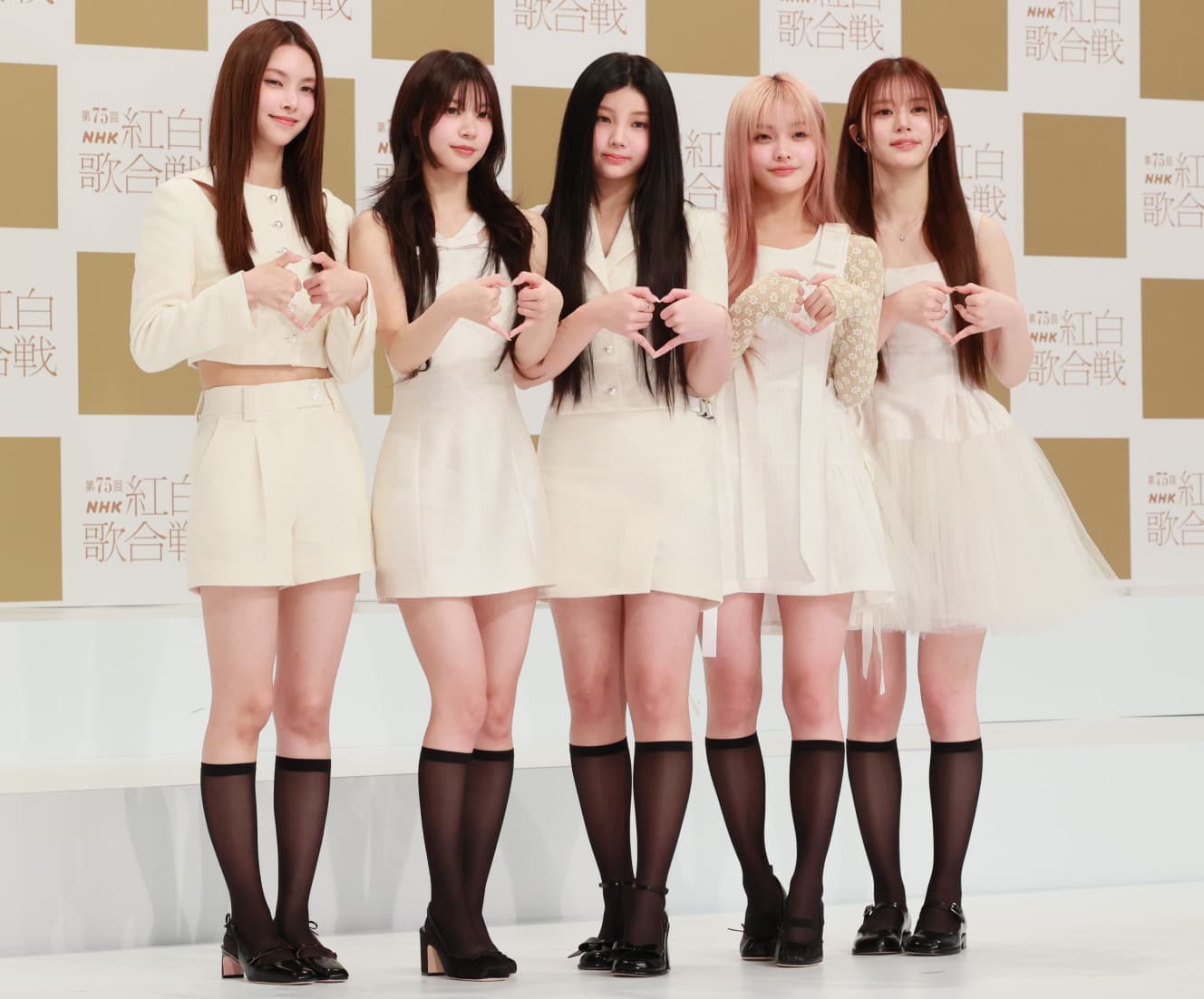NHK’s Excessive Sensitivity Shifts K-POP Coverage
Expressions such as “K-POP,” “Hallyu,” and “idols” were not used.
Last year’s NHK Kohaku Uta Gassen on New Year’s Eve has sparked criticism over what some see as NHK’s excessive consideration towards certain K-POP groups.
According to the January 16th issue of Shukan Bunshun, on December 29th, just after their rehearsal, ILLIT attended a press conference and photo session. Prior to this, NHK reportedly informed the press that certain questions, such as “What is this year’s kanji?”—a standard question—were prohibited. The reason given was that “Kanji is Japanese and doesn’t exist in Korea.” However, beyond this, NHK’s overly cautious consideration resulted in a number of additional restrictions being communicated to the press.
“The document distributed regarding questions stated that any questions involving political backgrounds, Taiwan, members’ private lives, or dieting/physical management were prohibited. Furthermore, expressions such as K-POP, Korean Wave, idol, and even members from Korea, Japan, and Taiwan were also not allowed. It’s clearly overboard. They probably accepted all the requests from the agency on the other side,” said a sports newspaper reporter who covered the Kohaku Uta Gassen.
NHK’s extreme consideration stemmed, in part, from the absence of STARTO ENTERTAINMENT groups in the previous year, following the exclusion of the old Johnny’s agency the year before. K-POP groups were seen as a way to attract younger viewers. The red team included ILLIT, LE SSERAFIM, and TWICE, while the white team featured TOMORROW X TOGETHER. Even the selection process showed signs of consideration toward certain agencies.
“Given the popularity of NewJeans in Japan, it would have been expected for them to be selected, but the group’s producer, Min Hye-jin (45), was embroiled in a contract dispute with their agency HYBE. NHK, wanting to maintain smooth relations with HYBE, which also represents the globally famous BTS, excluded NewJeans. Of the four groups, only TWICE belong to HYBE’s subsidiary, with the other three being from different agencies,” said an industry insider.
K-POP groups did not contribute much to the ratings.
In the live broadcast, the special segment featuring the debut performance of the popular rock band B’z and their live singing created a lot of excitement. However, for NHK, which has been experimenting in recent years to attract younger viewers, the ratings by artists did not seem to align with the production team’s expectations.
“The top performer was MISIA (46), who performed last, with a rating of 35.1% (according to Video Research, Kanto region). The second place was a tribute to the late Toshiyuki Nishida, with 34.5%. Following that, B’z came in fourth with 34.3%, Mariko Takahashi (75) at sixth with 33.8%, Iruka (74) at eighth with 33.7%, Sayuri Ishikawa (66) at ninth with 33.6%, and Kousetsu Minami (75) and Kiyoshi Hikawa (47) tied at tenth with 33.5%. Although the order of performances played a role, it became clear that older artists, supported by older viewers, garnered the highest ratings.
ILLIT, the top K-POP group, had a rating of 28.7% for their debut performance, with the other three K-POP groups also averaging around 30%. It became clear that their contribution to the ratings was minimal. Despite this, NHK’s excessive sensitivity toward K-POP has led to a growing debate within the station about the need for K-POP acts. This year, there may be a reduction in the number of K-POP acts,” said a sports newspaper reporter who covered the event.
The average household ratings for last year’s Kohaku were 29.0% for the first part and 32.7% for the second part. These numbers showed a slight increase from the worst-ever ratings of the previous year. Given that this year’s Kohaku was said to have excited the audience, the ratings by artists may offer insights into potential improvements for the future.



PHOTO: Kazuhiko Nakamura (1st and 2nd photos)
